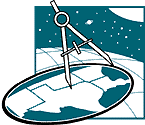
Other Voices
Connect: K-8 Hands-On Science and Math.
Published by Teachers' Laboratory, Inc.
PO Box 6480
Brattleboro, VT 05302.
($18 for 5 issues a year)
This practical teacher magazine packs activities, illustrations, teaching
tips, thoughtful essays, and literature suggestions into its 20-page issues.
Many of Connect's articles are by practicing teachers who convey their enthusiasm for
experiential approaches to science and math instruction. Previous issue themes
include Life Cycles; Running Water; Investigating Your Environment; and Models,
Scales and Metaphor (visualizing difficult concepts through models and
metaphors).
EdTalk: What We Know about Mathematics Teaching and Learning and EdTalk: What We
Know about Science Teaching and Learning.
both by Nancy Kober.
Available from: Council for Educational Development and
Research
2000 L Street NW, Suite 601
Washington DC 20036.
($5 each, payable by check or purchase order)
For anyone interested in current thinking about effective science and mathematics
instruction, these two guides to recent research are a handy place to start.
Presented in topical segments, the EdTalk books address such questions as:
How do students' attitudes affect science learning? What amount and what level of
mathematics content should be included in the curriculum? What role do
manipulatives play in mathematics instruction? What are effective ways to
integrate science with other curriculum areas?
A special segment in each book examines the role of parents and the home
environment in student success.
Hands On!
Published by TERC
2067 Massachusetts Ave.
Cambridge, MA 02140.
(Free)
This newsletter from TERC (Technical Education Research Center), a nonprofit
educational research and development organization, does an engaging job of
including interesting essays and practical examples for science and mathematics
educators. Recent issues have explored curriculum design, calculus at elementary
levels, and the development of number concepts. Several issues have explored the
effective use of educational technology and interactive networks.
A Private Universe.
by Matthew H. Schneps.
Available from Pyramid Films
PO Box 1048
Santa Monica CA 90406.
($95 plus $5 shipping and handling fee)
What are students really learning in class? Sometimes it isn't easy to tell. Take
the case of the middle school science class caught on camera in this 18-minute
video production. In a series of interviews it becomes apparent that while the
s their "private"
view of the universe remained unchanged. This thoughtful film provides a window
on the ways students incorporate ideas from many sources; it may give many of us
an uncomfortable glimpse of our own misconceptions. The film can be an effective
starter for teacher discussion, and is a particularly strong persuader for the
power of manipulating physical models to enlighten understanding. their "private"
view of the universe remained unchanged. This thoughtful film provides a window
on the ways students incorporate ideas from many sources; it may give many of us
an uncomfortable glimpse of our own misconceptions. The film can be an effective
starter for teacher discussion, and is a particularly strong persuader for the
power of manipulating physical models to enlighten understanding.
Science Education News.
Published by American Association for the Advancement of Science (AAAS)
1333 H Street NW
Washington, DC 20005-4792.
(Free)
Published 8 times a year, this small newsletter reports on AAAS and its
affiliates. It also provides information on grants, internships, publications,
conferences, resource materials, and any other ideas it can pack into its 4
pages. It serves as an "idea bank" for organizations expanding their school
science, mathematics, and technology education activities.
Classroom Compass Back Issues:
Issue 1.1 Contents:
Previous :
Next
|